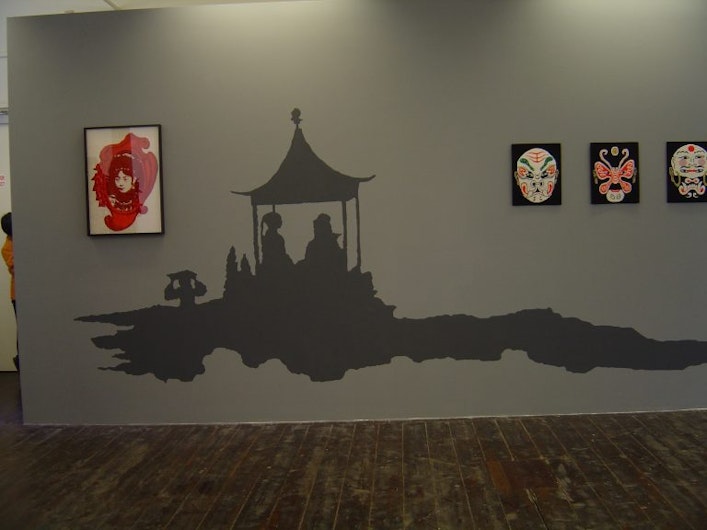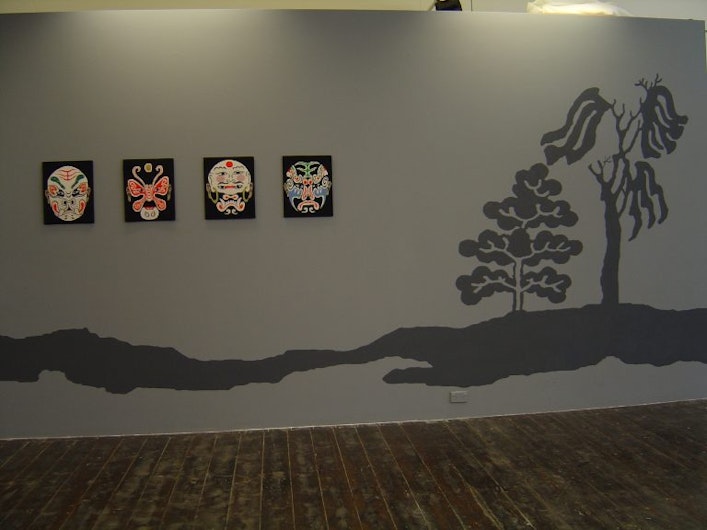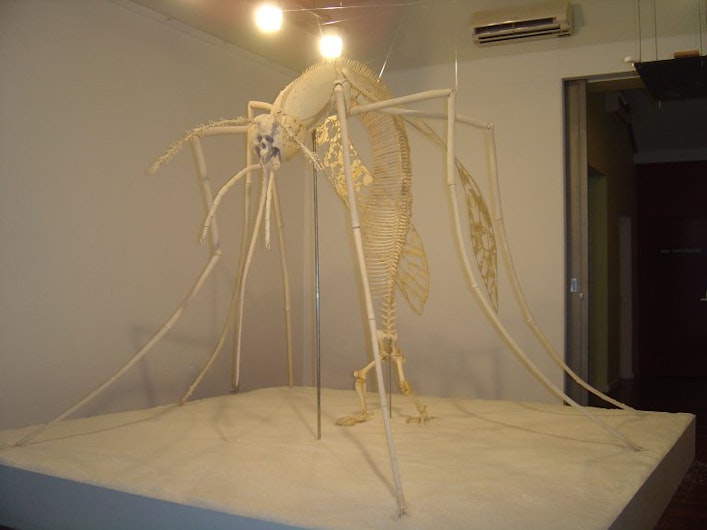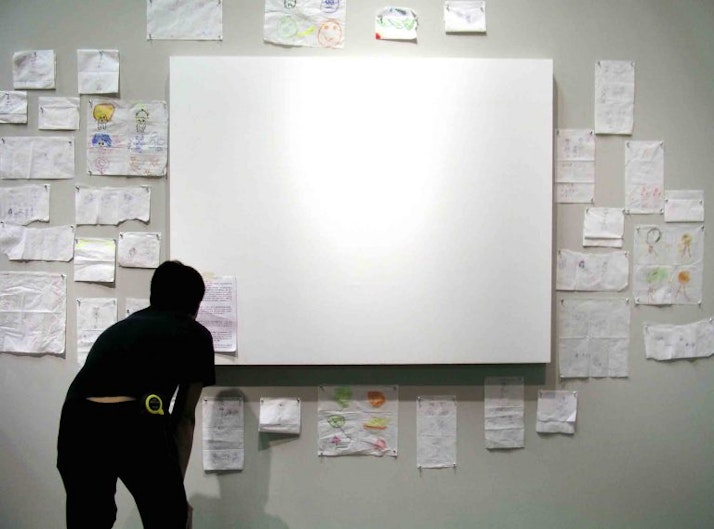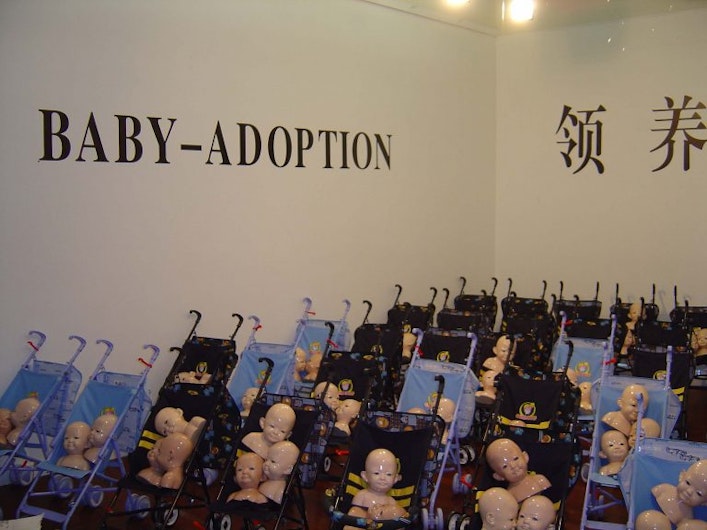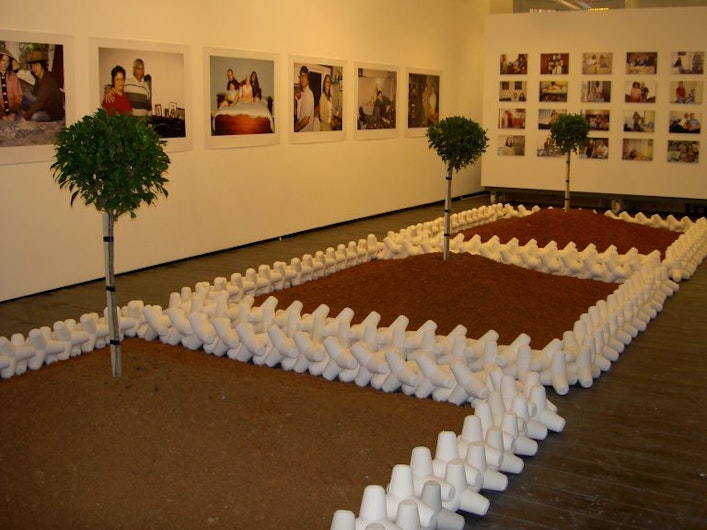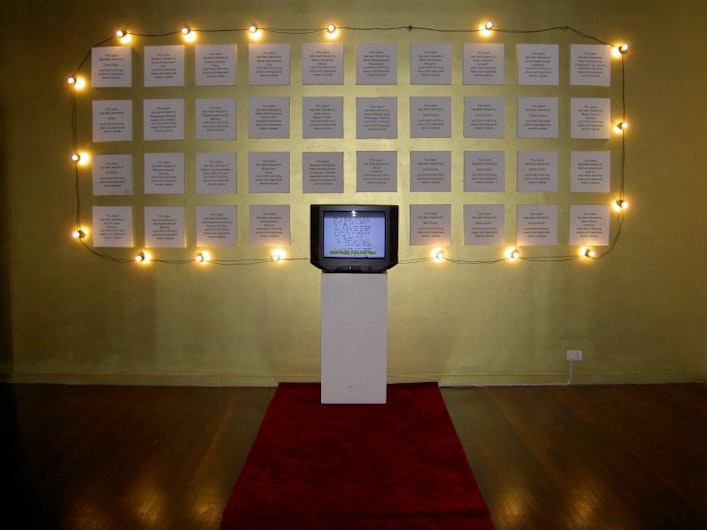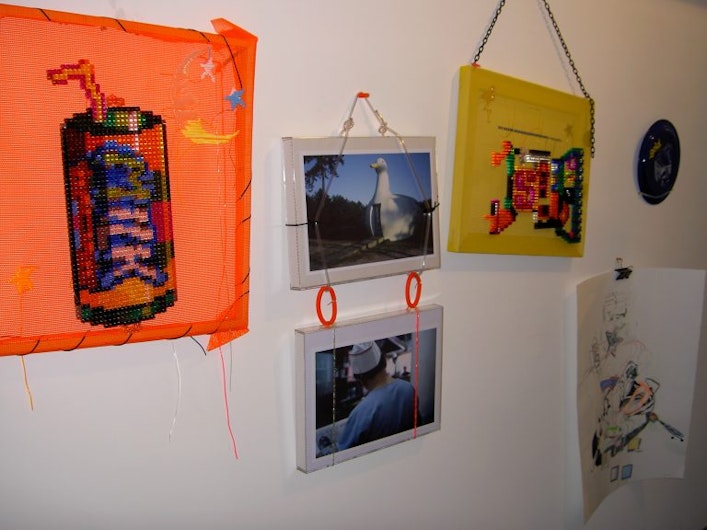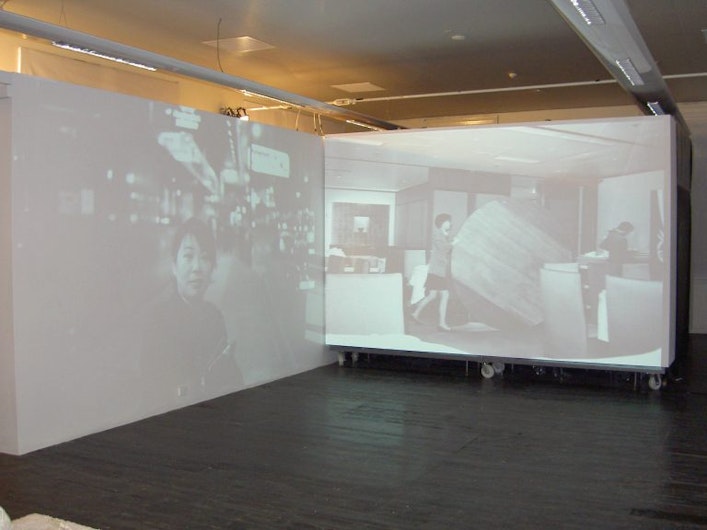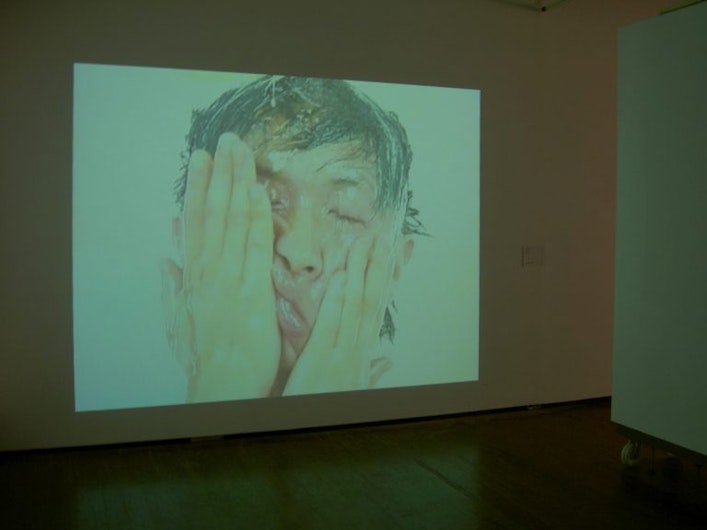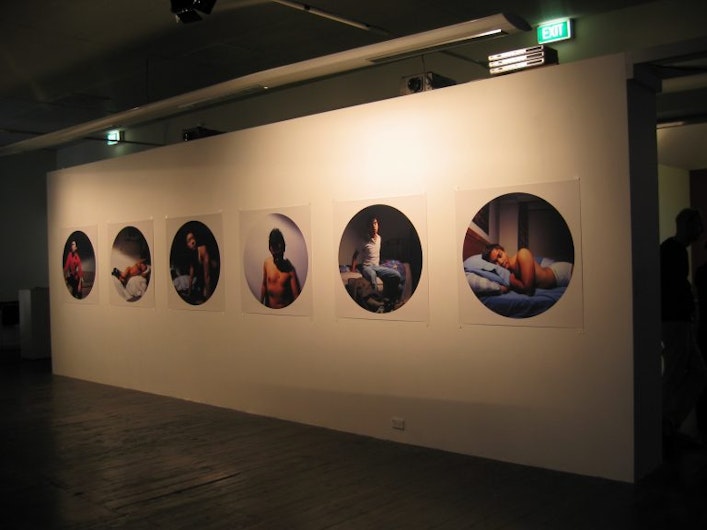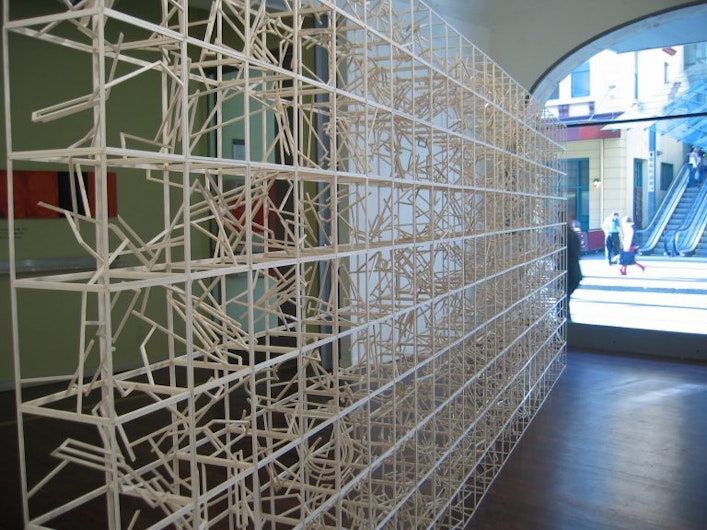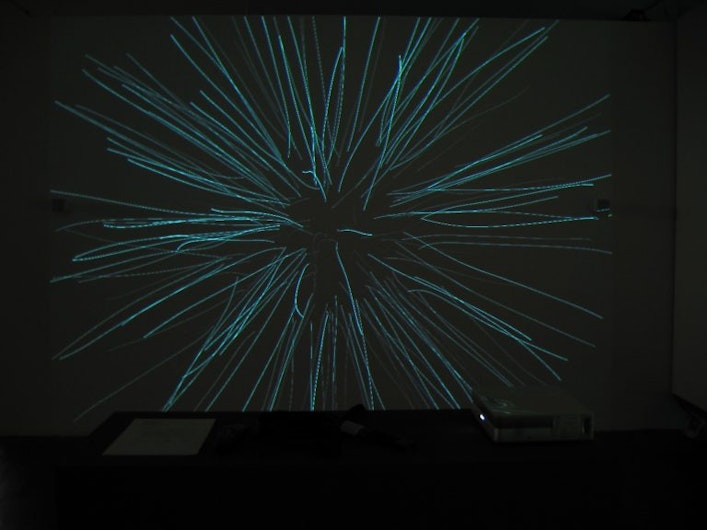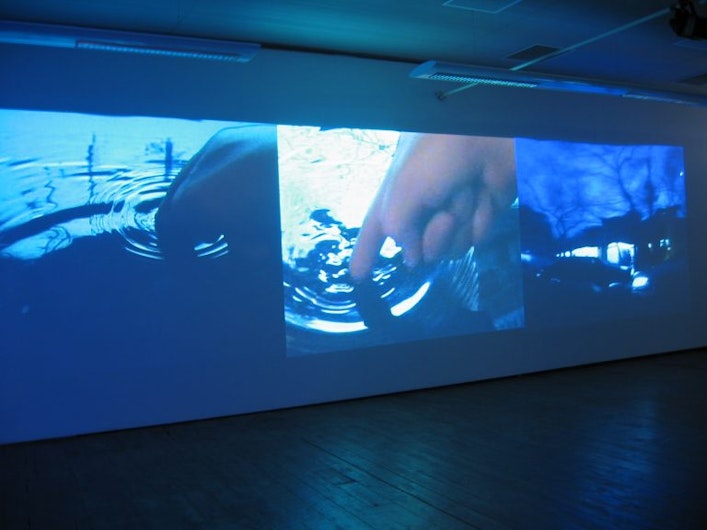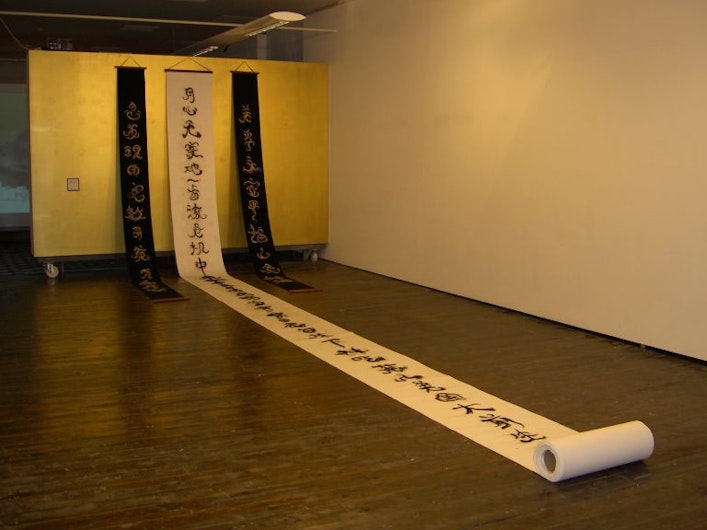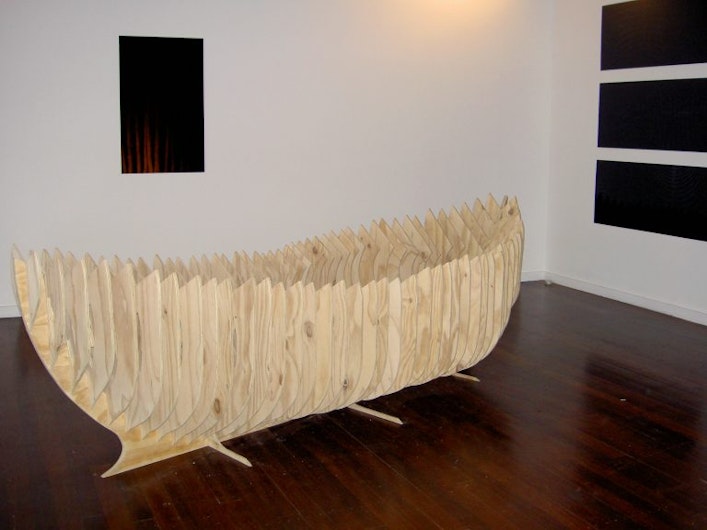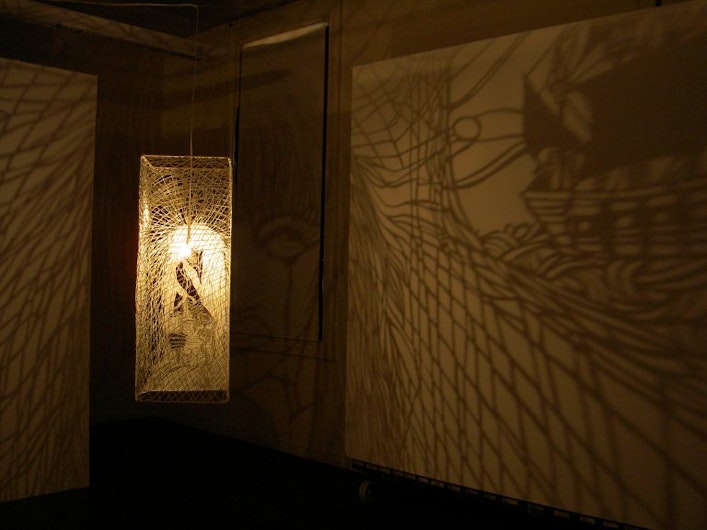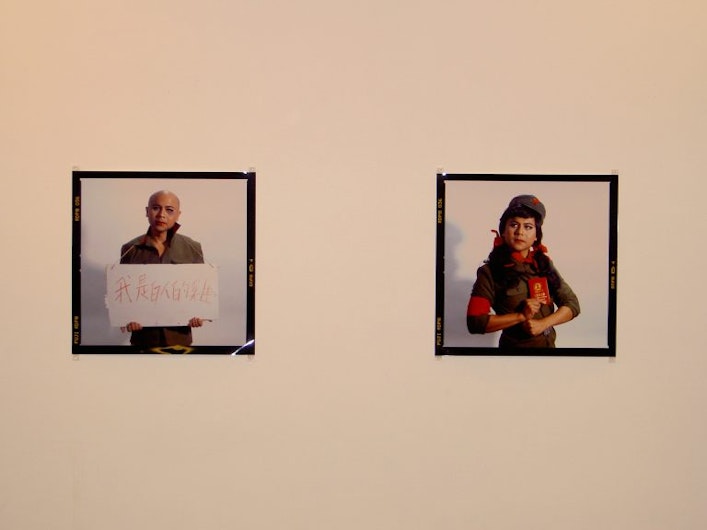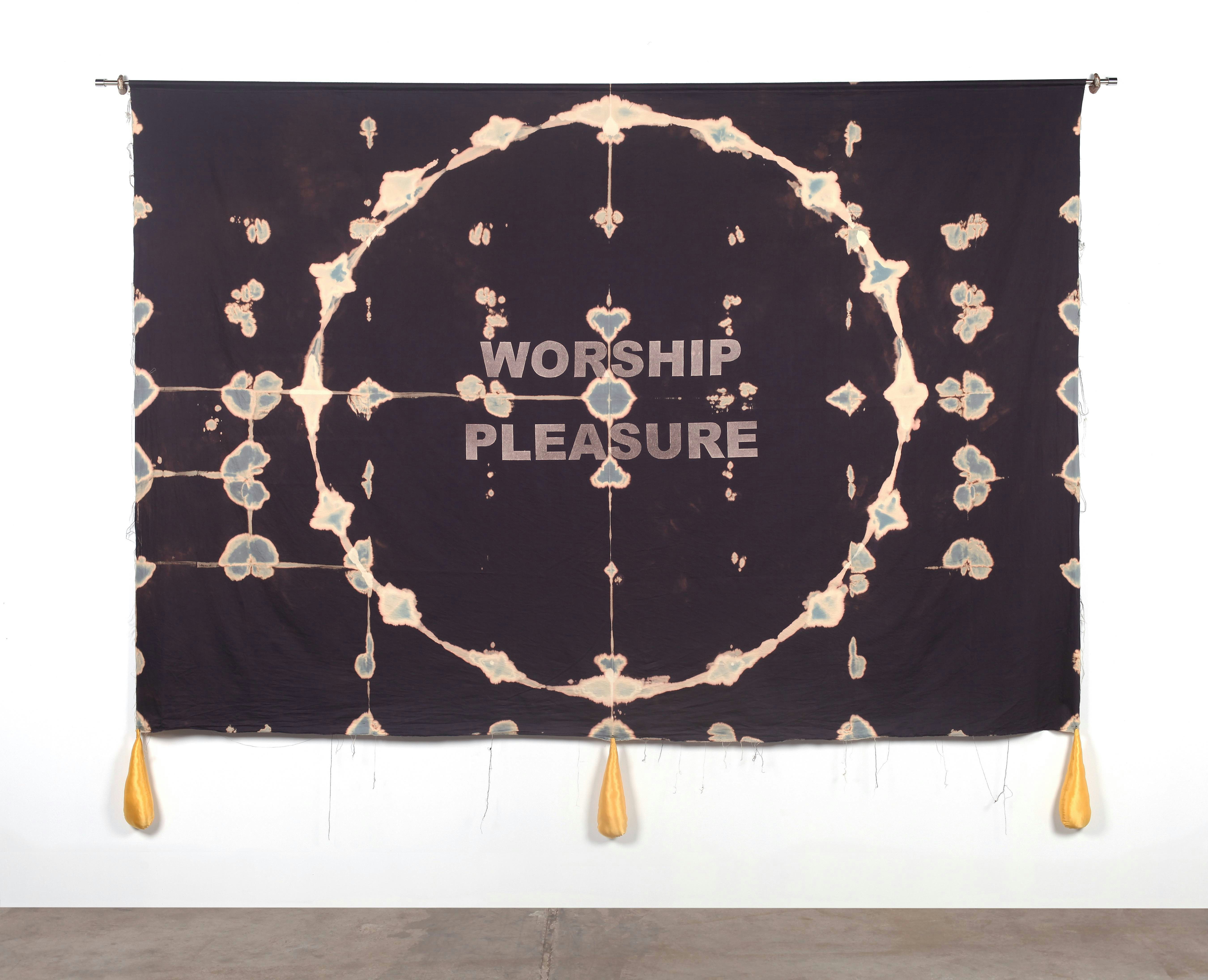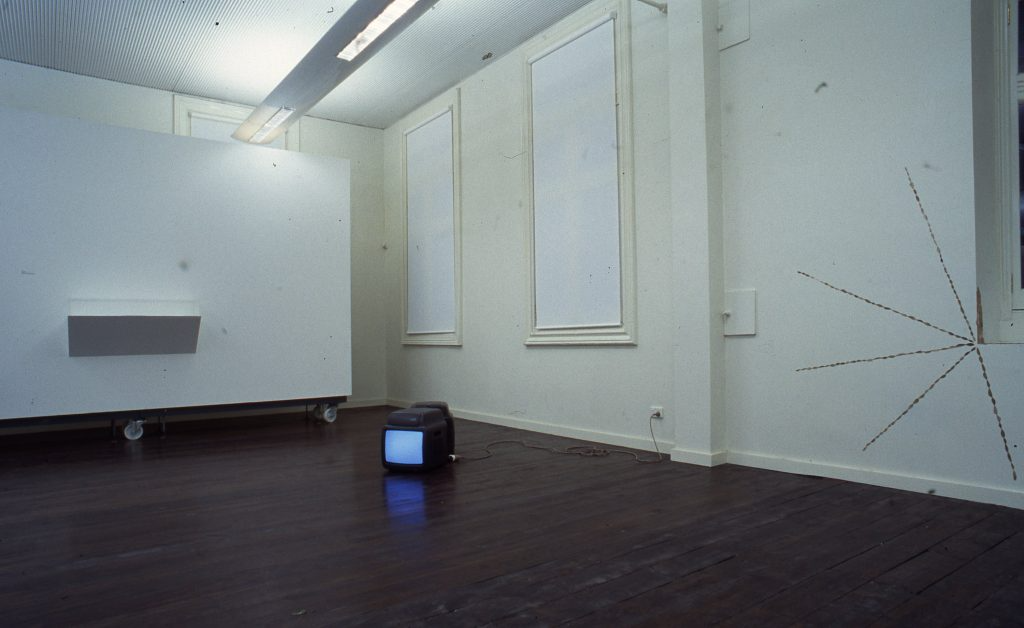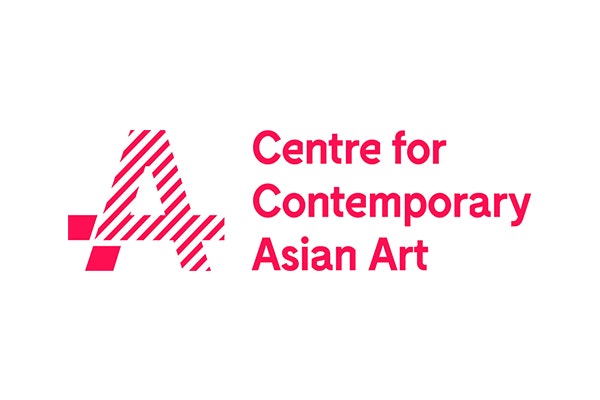Asian Traffic
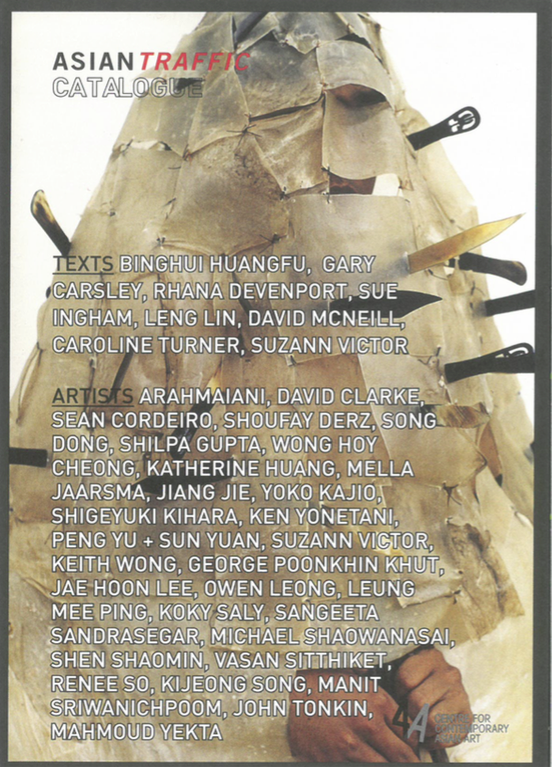
When
04 June 2004 -
02 October 2004
Location
Gallery 4A, Asia-Australia Arts Centre (Hay Street)
181-187 Hay Street, Haymarket, Sydney
Curator: Binghui Huangfu
Artists: Arahmaiani, David Clarke, Sean Cordeiro, Shoufay Derz, Song Dong, Shilpa Gupta, Wong Hoy Cheong, Katherine Huang, Mella Jaarsma, Jiang Jie, Yoko Kajio, Shigeyuki Kihara, Ken Yonetani, Peng Yu + Sun Yuan, Suzann Victor Keith Wong, George Poonkhin Khut, Jae Hoon Lee, Owen Leong, Leung Mee Ping, Koky Saly, Sangeeta Sandrasegar, Michael Shaowanasai, Shen Shaomin, Vasan Sitthiket, Renee So, Kijeong Song, Manit Sriwanichpoom, John Tonkin, Mahmoud Yekta.
Media (Broadsheet, Artlink)
Invitation (Today Art Museum, Beijing)
Invitation (CASA, Adelaide)
Exhibition Conference Pamphlet
Exhibition Postcard (Phase Two)
Exhibition Postcard (Phase Four)
Exhibition Postcard (Phase Five)
Exhibition Postcard (Phase Six)
June – October 2004
Asian Traffic is an international project presenting the work of influential Asian artists, mapping out some of the important cultural and social shifts occurring in the Asia-Pacific region. Curated by Binghui Huangfu, this multi-chapter exhibition marked out some of the shifting concerns of artists at the beginning of this century. The exhibition had a geographic reach that spread throughout Asia, and was subsequently developed into a major international touring project. It was loosely organised around 6 different phases of exhibitions. As the exhibition toured, local curators were invited to contribute to the project through exhibition and texts.
Phase 1 (4 – 19 June)
Artists: Shen Shaomin, Manit Sriwanichpoom, Mella Jaarsma and Renee So
Shen Shaomin and Manit Sriwanichpoom consider the disadvantages of technological advances in Asia and the dislocating effect this can have on society. Both artists are also influenced by the devastating manifestations that religious conflicts can have. Their work expresses how unnecessary it is to abide by religious prejudice or other discrimination when physically and emotionally we are all humanly similar.
Mella Jaarsma and Renee So address the question of identity and the categorisation that race provides. Renee So looks at “Asian-ness” as a style, a stereotype determined by people outside Asia, which she replicated and expressed in her iconic tapestries. Mella Jaarsma tried to break the links between origin and identity to express identity as a transient thing that is renewable and changeable.
Phase 2 (22 June – 10 July)
Artists: Arahmaiani, Wong Hoy Cheong, Sean Cordeiro, Jiang Jie, Leung Mee Ping and Vasan Sitthiket
Mella Jaarsma and Manit Sriwanichpoom exhibited in both Phase 1 and Pase 2. Having their work appear adjacent to the other artists in Phase 2 was conducive to changing their curatorial context so as to further encourage the exploration of Asian identity, not only on an individual level but also in a racial and global domain. Furthermore, their dual showing expresses the new relationships that curator Binghui Huangfu wished to display between different artworks so as to elucidate the shifting contexts of art in Asia and Western society. This expresses the cultural jam that is Asian Traffic.
Arahmaiani and Wong Hoy Cheong examine hybridity of Asia with its many religious and cultural influences. This diversity in Asian society entails political conflict. They consider the abuses of military and corporate authoritarianism intrinsic to this conflict. Both artists also look at fakery and social facades. Arahmaiani considers how a society can be simultaneously pleasant and violent. Cheong observes that information sources such as documentary and websites are assumed to be factual authorities, when they are actually fictive rhetorical sources of informations.
Adoption into another culture reactively sets forth changes that form the hybridised culture that Arahmaiani and Wong Hoy Cheong observes, but it also may have a dislocating effect on a person’s understanding of their original culture. Jiang Jie looks at ethical, moral and political issues involved in Westerners adopting Asian children. Leung Mee Ping, provides and alternative perspective on issues of globalisation through the eyes of a blind girl.
Phase 3 (16 – 31 July)
Artists: Ken Yonetani, Kijeong Song and Jae Hoon Lee
Through his interactive installations, Ken Yonetani demonstrates a heightened sensitivity to environmental concerns. Developed from research undertaken with CSIRO, Yonetani presented an installation of over 300 ceramic tiles, featuring ten endangered species of butterfly in Fumie – Butterfly Mandala, 2004. On opening night, these fragile tiles lined the floors and walls of the Gallery 4A, and in navigating the gallery to make their way through the exhibition, guests were forced to crush, trample and destroy the files underfoot. in this spectacular and ephemeral installation, the audience is acknowledged as complicit in the destruction and disappearance of the natural world.
Kijeong Song has been photographing the dissolution of cultural barriers through the documentation of cross-cultural relationships. In the series of photographs, Couples, 2004, Song documents couples in the intimate environment of their homes, where geographical and cultural boundaries dissolve. She highlights the banal and everyday family environment which people easily pass by in their day-to0-day life.
Jae Hoon Lee is a New Zealand based artist whose work attempts to open up new possibilities between cultures. Through the use of dual projections, he created a virtual Korean train station within the gallery space of Gallery 4A in Virtual Train Station, 2004. With trains loudly arriving and departing at regular intervals, and masses of passengers boarding and disembarking, there is a sense of disorientation and dislocation in the collapse of conventional spatial parameters. The work reflects a journey that traverses identity, space and time.
Phase 4 (6 August – 21 August)
Artists: Shilpa Gupta, Katherine Huang, Mahmoud Yekta and David Clarke.
Phase Four explores the shadowy ground of money, influence, spiritual intervention and memory. Shilpa Gupta explores notions of religious identity and spiritual intervention, suggesting the role of artists is to question belief at a time when there is a clash of civilisations and political alignments both at home, on the border and beyond. Her work in Asian Traffic, Untitled (2001) explores the role of the artist as a narrator of her time, as an observer and mediator between conflict and belief.
Filmmaker Mahmoud Yekta arrived in Australia from the Middle East in 1998, and also responds to momentous events of the last few years using film and shadows to unearth the hidden racial, gender and class injustices that continue to govern our lives. His video installation, Fled (2004) is presented in the gallery in a way that makes viewing uncomfortable: presented in a narrow corridor, the audience negotiates this space as their shadows are also projected onto the filmic surface.
This phase also includes Hong Kong-based David Clarke and Melbourne-based artist Katherine Huang, who both present highly personal views of the world, shifting between both private and public, biography and social engagement. David Clarke presents images of cities and its transformations through photography, collection and observation visualised within a personal trajectory through the metropolitan sprawl.
Huang playfully explores everyday city environments and experiences through a process of collection, arrangement and assemblage of ephemeral materials including plastics, drawing and photographs, collected through her travels in Melbourne, and major metropolitan centres in Asia and America, Huang uncovers memories and hints at the way in which we construct meaning and narrative of our experiences. Huang is interested in the ways in which memory, like rambling architecture of cities, grafts and builds upon itself.
Phase 5 (27 August – 11 September)
Artists: Song Dong, George Poonkhin Khut, Owen Leong, Koky Saly, Suzann Victor and Keith Wong
Phase Five asks viewers to reconsider their spatial bodily relationship to the urban, social and political environment. Song Dong, one of China’s most acclaimed contemporary artists, has created a sumptuous four-channel video installation, Floating City (2004) especially for Gallery 4A. An enveloping meditation on the metropolis, urbanisation and the city, Song Dong’s practice explores notions of perception, transience and the ephemeral nature of existence. Sydney based new-media artist George Poonkhin Khut created an intimate and meditative interactive sound sculpture, Drawing Breath v. 1 (2004) which enables individual participants to observe and interact with aspects of their own breath patterns, using vivid sound and video animations controlled by changes in the depth and rate of breathing and the principles of biofeedback behavioural training.
Australian artists Owen Leong and Koky Saly both explore new representations of Asian male bodies in their individual art practices. In his double video installation, Second Skin (2004), Leong uses exquisite substances such as honey, milk, prosthetic wounds and sugar antlers in combination with simple performative gestures to make visible the concealed socio-political structures that mark our bodies through race, gender and colour. Saly has produced a lush new photographic series exploring the gay community as a potent site of cultural and racial displacement, questioning the notion of community within the last two decades and how these may impact on the future of gay Asian men within the Australian gay community.
Permeable and transient forms are reflected in the work of Keith Wong. Wong’s beautiful large-scale balsa wood installations of disassembles grids touch upon human experience and immersion in the world to heighten out consideration of the dynamic exchanges between our bodies and the space of the world that folds back upon us.
Phase 6 (16 September – 2 October)
Artists: Yoko Kajio, Shoufay Derz, Sangeeta Sandrasegar, Michael Shaowanasai, Peng Yu + Sun Yuan and Shigeyuki Kihara
The sixth and final Phase of Asian Traffic presents a diverse mix of local and international artists. Michael Shaowanasai is one of Thailand’s most recognised artists and will be presenting one of his latests series of photographs of Redguards (2004). Having lived and worked in both Germany and Japan, his work is informed by the condition of global politics. The artists uses a cheeky and humorous approach to assume the roles of young men and women of the Chinese Youth League, with an underlying political agenda that deals with themes of sexuality, gender and identity.
Suzann Victor has created a work dealing with the problematics of language. The artist presents large-scale scroll pieces on which she has written Chinese characters in human hair. For the duration of the exhibition, visitors to the gallery will be invited to teach her the Chinese characters they know, and in an ongoing process of exchange and growth between the artist and the public, these new Chinese characters will be added to the artwork as the exhibition unfolds.
South Australian artist Yoko Kajio explores her immediate environment with an intense childlike wonder that is both surprising and magical. For this Phase of Asian Traffic, Kajio constructed a multi-media environment in Gnidrocer – Nothing is Permanent (2004) in which viewers can immerse themselves and contemplate complex and ever-changing alternative realities to explore the space between representation and imagination.
Throughout her art practice, Shoufay Derz has sought to grapple with and to reflect some of the more fundamental questions in life. The result is photographic, video and installation-based work that explores issues of selfhood and the metaphysical within a contemporary context.
Collaborative Chinese artists Peng Yu + Sun Yuan are internationally renowned for their highly provocative and controversial installations. For Asian Traffic, the artists presented a thoughtful and ephemeral installation, Corner of Ice Mountain (2004), where a cubic metre block of dry ice was placed in the upstair gallery and allowed to melt, to delight and elude visitors by filling the gallery with a layer of mist, only to disappear completely by the next morning. Peng and Sun have described this work as being the corner of a mountain, inviting visitors to contemplate the true depth and breadth of contemporary Asian art being produced today.
Exhibition Documentation below (Phases 1 to 6)
